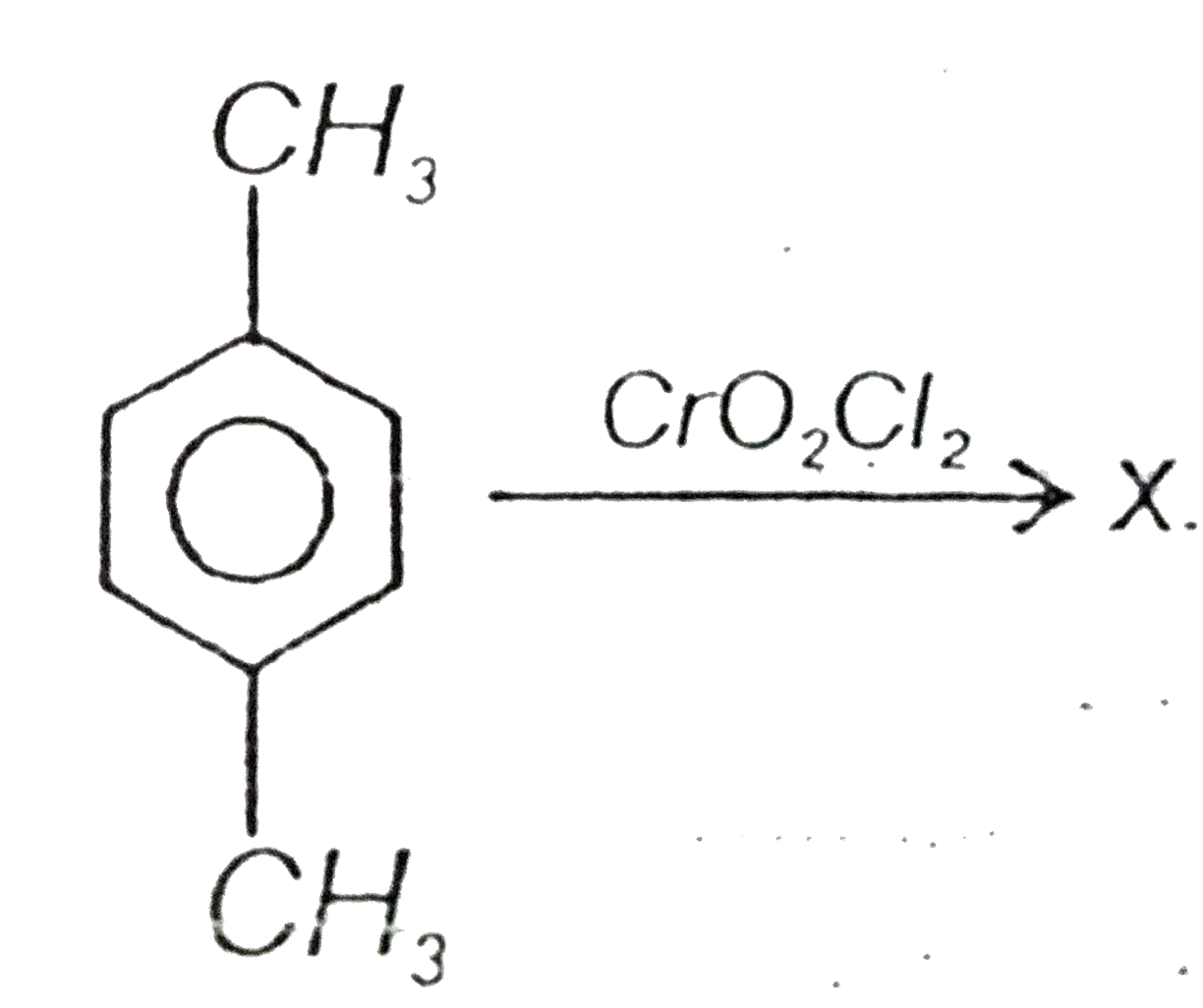Complete the following reactions with appropriate structures of product/reagents :
C6H5CH=CH2Br2−−→[A](i)NaNH2(3equivalent)−−−−−−−−−−−−−−−→(ii)CH3I[B]
To solve the given reaction sequence, we will break it down into two main steps, identifying the products A and B.
Step 1: Bromination of the Alkene
The starting compound is an alkene, specifically styrene (C6H5CH=CH2). The first reaction involves the addition of bromine (Br2) to this alkene.
1. Nucleophilic Attack: The alkene (C6H5CH=CH2) undergoes electrophilic addition with Br2. The π bond of the alkene attacks one of the bromine atoms, forming a bromonium ion intermediate.
- The structure of the bromonium ion can be represented as:
C6H5−C+−CH2−Br
2. Anti-Addition: The bromide ion (Br-) then attacks the more substituted carbon (the one bonded to the phenyl group) from the opposite side (anti-addition), leading to the formation of a dibrominated product.
- The final structure of product A is:
C6H5−CHBr−CHBr
Step 2: Dehydrohalogenation and Nucleophilic Substitution
In the second step, we treat the dibrominated product with sodium amide (NaNH2) and methyl iodide (CH3I).
1. Dehydrohalogenation: The strong base NaNH2 removes the acidic hydrogen atoms adjacent to the bromine atoms, leading to the formation of a triple bond (alkyne). This occurs in two steps:
- The first equivalent of NaNH2 removes a hydrogen from the carbon adjacent to one bromine, and the bromine leaves, forming a double bond.
- The second equivalent of NaNH2 removes the hydrogen from the other adjacent carbon, and the second bromine leaves, forming a triple bond.
- The structure after this step (product A) becomes:
C6H5−C≡C−H
2. Nucleophilic Attack: The remaining equivalent of NaNH2 generates a nucleophilic anion from the terminal alkyne (C6H5-C≡C^-). This anion then attacks the methyl iodide (CH3I), leading to the substitution of the iodine atom.
- The final structure of product B is:
C6H5−C≡C−CH3
Summary of Products
- Product A (after bromination): C6H5-CHBr-CHBr
- Product B (after dehydrohalogenation and nucleophilic substitution): C6H5-C≡C-CH3
The starting compound is an alkene, specifically styrene (C6H5CH=CH2). The first reaction involves the addition of bromine (Br2) to this alkene.
- The structure of the bromonium ion can be represented as:
C6H5−C+−CH2−Br
C6H5−CHBr−CHBr
In the second step, we treat the dibrominated product with sodium amide (NaNH2) and methyl iodide (CH3I).
- The first equivalent of NaNH2 removes a hydrogen from the carbon adjacent to one bromine, and the bromine leaves, forming a double bond.
- The second equivalent of NaNH2 removes the hydrogen from the other adjacent carbon, and the second bromine leaves, forming a triple bond.
C6H5−C≡C−H
C6H5−C≡C−CH3
- Product A (after bromination): C6H5-CHBr-CHBr
- Product B (after dehydrohalogenation and nucleophilic substitution): C6H5-C≡C-CH3
Topper's Solved these Questions
- HYDROCARBONSBOOK - VMC MODULES ENGLISHCHAPTER - HYDROCARBONSEXERCISE - JEE Main Archive
46 Videos
- HALOALKANES AND HALOARENESBOOK - VMC MODULES ENGLISHCHAPTER - HALOALKANES AND HALOARENESEXERCISE - IN-CHAPTER EXERCISE - F
6 Videos
- ICONIC EQUILIBRIUMBOOK - VMC MODULES ENGLISHCHAPTER - ICONIC EQUILIBRIUMEXERCISE - IMPECCABLE
50 Videos
Similar Questions
Knowledge Check
Complete the following reaction by identifying X and Y.
CH3CH2C≡CHNaNH2−−−−→XC2H5Br−−−−→YAX=CH3CH2COONa,Y=CH3CH2CH=CH2BX=CH3CH2C≡CNa,Y=CH3CH2C≡CC2H5CX=CH3CH2CH2CH2Na,Y=CH3CH2CH2CH3DX=CH3CH2CH≡CNa,Y=CH3CH2−C∣C2H5H−CH3
Complete the following reaction:
CH3CH2COOHP,Br2−−−→[A](i)alc.KOH(excess)−−−−−−−−−−−−−→(ii)H+[B]
View SolutionComplete the following reaction:
CH3CH2COOHP,Br2−−−→[A](i)alc.KOH(excess)−−−−−−−−−−−−−→(ii)H+[B]
View SolutionComplete the following reaction:
CH3CH2COOHP,Br2−−−→[A](i)alc.KOH(excess)−−−−−−−−−−−−−→(ii)H+[B]
View SolutionIdentify A, B and C in the following reactions.
CH3CH(CH3)CONH2Br2,NaOH−−−−−−→AHONO−−−→Br2BO−−→C
View SolutionIdentify the product in the following reactions.
CH3COOH + NaOH →
View SolutionWhich one/ones of the following reactions will yield 2-propanol ?
(I) CH2=CH−CH3+H2OH+−−→
(II) CH3−CHO(i)CH3Mgl−−−−−−−→(ii)H2O
(III) CH2(i)C2H5MgI−−−−−−−→(ii)H2O
(IV) CH2=CH−CH3Neutral KMnO4−−−−−−−−−−→
View SolutionComplete the following reactions:
(i) CH3−CH3∣C∣Cl−CH2CH3alcKOH−−−−→ΔAO3−−−−−→Zn/H2O(B+C)
(ii) CH3ICH−CH3alcKCN−−−−→A(i)SnCl2/HCl−−−−−−−−−−−−→(ii)H2O.OH.H2O2B
(iii) HCNHCl/AlCl3−−−−−−→A(i)C6H6Δ−−−−−−−−−−→(ii)(H2O)/H−B
(iv)
View Solution